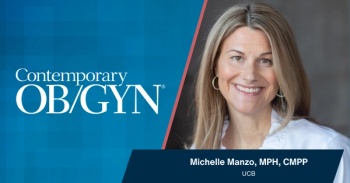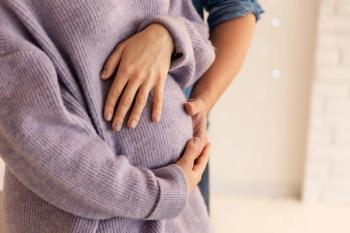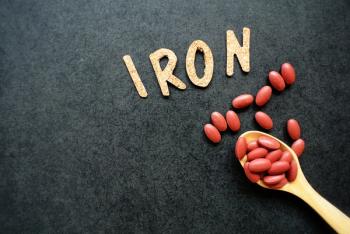
Ovarian Hyperstimulation Syndrome and Prophylactic Human Embryo Cryopreservation
To review utilisation of elective embryo cryopreservation in the expectant management of patients at risk for developing ovarian hyperstimulation syndrome (OHSS), and report on reproductive outcome following transfer of thawed embryos.
Objective
To review utilisation of elective embryo cryopreservation in the expectant management of patients at risk for developing ovarian hyperstimulation syndrome (OHSS), and report on reproductive outcome following transfer of thawed embryos.
Materials and methods
Medical records were reviewed for patients undergoing IVF from 2000–2008 to identify cases at risk for OHSS where cryopreservation was electively performed on all embryos at the 2 pn stage. Patient age, total number of oocytes retrieved, number of 2 pn embryos cryopreserved, interval between retrieval and thaw/transfer, number (and developmental stage) of embryos transferred (ET), and delivery rate after IVF were recorded for all patients.
Results
From a total of 2892 IVF cycles undertaken during the study period, 51 IVF cases (1.8%) were noted where follicle number exceeded 20 and pelvic fluid collection was present. Elective embryo freeze was performed as OHSS prophylaxis in each instance. Mean (± SD) age of these patients was 32 ± 3.8 yrs. Average number of oocytes retrieved in this group was 23 ± 8.7, which after fertilisation yielded an average of 14 ± 5.7 embryos cryopreserved per patient. Thaw and ET was performed an average of 115 ± 65 d (range 30–377 d) after oocyte retrieval with a mean of 2 ± 0.6 embryos transferred. Grow-out to blastocyst stage was achieved in 88.2% of cases. Delivery/livebirth rate was 33.3% per initiated cycle and 43.6% per transfer. Non-transferred blastocysts remained in cryostorage for 24 of 51 patients (46.1%) after ET, with an average of 3 ± 3 blastocysts refrozen per patient.
Conclusion
OHSS prophylaxis was used in 1.8% of IVF cycles at this institution; no serious OHSS complications were encountered during the study period. Management based on elective 2 pn embryo cryopreservation with subsequent thaw and grow-out to blastocyst stage for transfer did not appear to compromise embryo viability or overall reproductive outcome. For these patients, immediate elective embryo cryopreservation and delay of ET by as little as 30 d allowed for satisfactory conclusion of the IVF sequence, yielding a livebirth-delivery rate (per ET) >40%.
Introduction
Ovarian hyperstimulation syndrome (OHSS) is the most serious consequence of ovulation induction and in vitro fertilisation (IVF
Materials and methods
Patient selection and study design
Patient records for all ovulation
All IVF patients included for study received a focused physical examination, and saline infusion sonogram, which were normal before initiating gonadotropin therapy. Controlled ovarian hyperstimulation regimens were developed from factors including historical response to medications, patient age, BMI and ovarian reserve assessment. Pituitary downregulation was achieved with oral contraceptives and GnRH agonist, followed by daily administration of gonadotropins (daily dose ≤ 150 IU/d) with periodic monitoring as previously described [4]. Treatment continued until adequate ovarian response was attained, defined as at least three follicles with mean diameter ≥ 17 mm. Transvaginal sonogram-guided oocyte retrieval was accomplished 36 h after subcutaneous administration of 10,000 IU hCG. Immediately after retrieval oocyte-cumulus complexes were placed into Universal IVF medium (MediCult; Jyllinge, Denmark), with insemination (including ICSI) also carried out using this reagent under washed liquid paraffin oil (MediCult, Denmark). Fertilisation was assessed after 16–18 h and was considered normal when two distinct pronuclei were noted.
For patients considered at risk for OHSS (based on criteria outlined above), extensive and immediate counselling was provided during the IVF cycle to review the potentially grave risks associated with fresh embryo transfer (as originally planned at cycle initiation). Since fresh transfer was not regarded as safe when OHSS might develop, alternate options of cycle cancellation and elective embryo cryopreservation were carefully outlined. While complete cycle cancellation was uniformly offered, no patients at risk for OHSS elected to do this during the study interval. Consequently, these cases were managed via elective embryo freeze (see
Embryo cryopreservation sequence
Following confirmation of normal fertilisation by the presence of two distinct pronuclei, embryos were placed in cryoprotectant (Embryo Freezing Pack, MediCult, Denmark) at room temperature and cooled to -7°C at a rate of 2°C/min. Manual seeding followed after 5 min, then the embryos were cooled from -7°C to -30°C at a rate of 0.3°C/min. The final rapid cooling step brought the embryos from -30°C to -190°C at 50 C/min; they were next transferred to liquid N2 for long-term storage and maintained at -196°C.
Thaw, culture & transfer protocols
2 pn embryos were removed from liquid N2 storage and kept at room temperature ×30 sec before being placed in H2O bath at 30°C for 1 min. Embryos were placed in 1,2 propanediol/sucrose-based thaw media (Embryo Thawing Pack, MediCult, Denmark) at room temperature for a total of 20 min. Culture was maintained to day five in microdrops of BlastAssist media I and II (MediCult, Denmark) under washed paraffin oil in a 5%CO2 + 5%O2 atmosphere at 95% humidity. Embryos were assessed daily for cell number, degree of fragmentation, and compaction. Day five blastocysts selected for in utero transfer generally demonstrated a well-defined inner cell mass and highly cellular, expanding trophoectoderm. Blastocysts were loaded into an ET catheter (K-Soft-5000 Catheter; Cook Medical Inc., Spencer, Indiana USA), and all transfers occurred under direct transabdominal sonogram guidance.
Secondary freeze for non-transferred blastocysts
Supernumary blastocysts selected for (repeat) cryopreservation were incubated in 5–6% CO2 atmosphere at 37°C × 2 h, then placed in cryoprotectant (BlastFreeze, MediCult, Denmark) cooled to -6°C at a rate of 2°C/min. After manual seeding, embryo temperature was taken from -6°C to -40°C at 0.3°C/min. Final rapid cooling of blastocysts from -40°C to -150°C at 35°C/min was followed by transfer to long-term storage in liquid N2 at -196°C.
Outcomes reporting and statistical analysis
Primary endpoints of the study were patient age, total number of oocytes retrieved, number of 2 pn embryos cryopreserved, interval between retrieval and thaw/transfer, number (and developmental stage) of embryos transferred (ET), and livebirth-delivery rate. All data were tabulated as mean ± SD. Patients were periodically followed during pregnancy, or contact was established with their delivering obstetrician to determine delivery status. In the event that contact could not be made and delivery status remained unknown, this was also noted in the record.
Results
A total of 2892 IVF cycles proceeded to oocyte retrieval during the study period. Of these, 51 patients (1.8%) were judged to be at risk for developing OHSS and prophylactic embryo freezing was performed. While none of these patients qualified for fresh embryo transfer according to medical centre policy, there were some patients requesting elective embryo cryopreservation who were not at risk for OHSS. Reasons for empiric embryo cryopreservation in these cases included incidental surgery unrelated to fertility, diagnosis of malignancy, and divorce. Reproductive outcomes for these patients not considered at-risk for OHSS were excluded from the calculation of delivery rates in this study.
The mean (± SD) age of patients at risk for OHSS during the study period was 32 ± 3.8 yrs. Both ovaries were present and morphologically normal at baseline for all patients at risk for OHSS. All patients underwent ultrasound-guided transvaginal oocyte retrieval at our facility without incident; the average number of oocytes retrieved per patient was 23 ± 8.7. After fertilisation either by conventional insemination or ICSI, an average of 14 ± 5.7 2 pn embryos were cryopreserved per patient. Embryo cryopreservation was successfully carried out for approximately 61% of the total number of retrieved oocytes in this population.
Over the next 30 d, patients at risk for OHSS were periodically re-evaluated after elective cryopreservation of their embryos to document clinical improvement and resolution of symptoms. When there was no laboratory evidence of haemoconcentration, pelvic fluid collections had cleared, and ovarian quiescence was noted via ultrasound, it was considered safe to resume the
For patients considered at risk for OHSS where elective 2 pn embryo cryopreservation was performed, the live birth delivery rate was 33.3% (17/51) per initiated cycle and 43.6% (17/39) per transfer. No twin or triplet deliveries occurred in this series. Follow-up with patients after delivery identified no long-term OHSS sequela, and there were no malformations or developmental anomalies reported among offspring.
Discussion
Ovarian hyperstimulation syndrome (OHSS) is a potentially fatal iatrogenic condition resulting from excessive stimulation of the ovaries [5]. The vast majority of OHSS develops in the setting of injectable gonadotrophins used in IVF,
According to the World Health Organization (WHO), severe OHSS develops in 0.2–1% of all stimulated ART cycles [7]. Several methods to prevent OHSS have been advocated including elective embryo cryopreservation, using low-dose hCG or GnRH-agonist for triggering oocyte maturation, "coasting" gonadotropin use, and cycle cancellation. To date, no single investigation has compared patient outcome and pregnancy
When a patent is considered at risk for OHSS at our centre, we do not typically proceed with fresh embryo transfer (ET). During patient counselling, we explain that the strategy of empiric embryo freezing to minimise OHSS risk is not new [1,3,13,14], but has considerably lower risk than proceeding with fresh ET as originally planned. The rationale for delaying ET derives from the intent to delay pregnancy, since hCG increases VEGF which in turn facilitates the endothelial permeability associated with OHSS [15]. One of the first prospective studies to demonstrate the therapeutic benefit of elective early embryo cryopreservation in OHSS patients randomised subjects to undergo either fresh ET or receive delayed ET after cryopreservation (and thaw) of all embryos. No cases of OHSS developed in the setting of elective embryo freeze; pregnancy rates were comparable between the two groups [16].
OHSS risk is not always eliminated by elective freezing of embryos. An earlier review of precautionary cryopreservation of all embryos at the 2 pn stage noted that OHSS developed anyway in 27% of cases [13]. Some have speculated that elective embryo freezing may reduce the severity – but not lower the incidence of – symptomatic OHSS [14].
One unexpected finding from the present study was the large variation in time interval between oocyte retrieval and thaw/transfer among patients at risk for OHSS, which ranged from 30 to 377 days. While neither duration of cryostorage nor type of ovulation
Our study has several limitations which should be acknowledged. We focused more on OHSS prevention rather than development of the condition itself. Serum oestradiol has been used as a marker for OHSS risk for many years [1,2,5,7,9], but this method of screening was not regularly available at our institution throughout the nine-year study period and thus was not part of this analysis. Additionally, the role of paracentesis or albumin/hespan infusion could not be specifically studied in this report because medical records were not electronically searchable for these terms throughout the study period. While 2 pn embryos for cryopreservation were produced from approximately 61% of retrieved oocytes in this series, our OHSS cases were not stratified according to ICSI vs. conventional insemination. However, previous research has suggested that pregnancy rates after cryopreservation of 2 pn embryos are not impacted by fertilisation method [20]. Our retrospective study also did not have a control group, so it is unknown how many patients might have developed OHSS if a fresh transfer had been performed. However, it is reasonable to conclude that some OHSS cases would have been expected from this high-risk population.
In conclusion, this descriptive study finds conservative application of elective embryo cryopreservation to be a useful component of OHSS prophylaxis. High delivery rates are typical among women at risk of OHSS who undergo elective embryo cryopreservation with deferred thaw/transfer, and our outcomes data support this finding as well. While serum oestradiol determinations can be helpful in OHSS surveillance, this report shows that screening based on clinical parameters can also be effective. Further studies are planned to refine specific factors that might be useful in prediction of OHSS risk, with a view to optimise clinical management of this important and potentially dangerous condition.
Competing interests
The authors declare that they have no competing interests.
Authors' contributions
ESS and LJM collected data for the study and prepared the original manuscripts; MGG provided design input and statistical analysis; GDC organised the embryology laboratory components and provided data on gametes and reproductive outcome; DJW and APHW supervised the project and directed the research. All authors approved the final manuscript.
Figure 1
References:
Journal of Ovarian Research 2008, 1:7doi:10.1186/1757-2215-1-7
© 2008 Sills et al; licensee BioMed Central Ltd.
This is an Open Access article distributed under the terms of the Creative Commons Attribution License
Journal of Ovarian Research 2008, 1:7doi:10.1186/1757-2215-1-7
The electronic version of this article is the complete one and can be found online at:
References
1. Tiitinen A, Husa LM, Tulppala M, Simberg N, Seppala M: The effect of cryopreservation in prevention of ovarian hyperstimulation syndrome. BJOG 1995, 102:326-9.
2. Delvigne A, Rozenberg S: Systematic review of data concerning etiopathology of ovarian hyperstimulation syndrome. Int J Fertil Womens Med 2002, 47:211-26.
3. Amso NN, Ahuja KK, Morris N, Shaw RW: The management of predicted ovarian hyperstimulation syndrome involving gonadotropin-releasing hormone analog with elective cryopreservation of all pre-embryos. Fertil Steril 1990, 53:1087-90.
4. Sills ES, Schattman GL, Veeck LL, Liu HC, Prasad M, Rosenwaks Z: Characteristics of consecutive in vitro fertilization cycles among patients treated with follicle-stimulating hormone (FSH) and human menopausal gonadotropin versus FSH alone. Fertil Steril 1998, 69:831-5.
5. D'Angelo A, Amso N: Embryo freezing for preventing ovarian hyperstimulation syndrome. Cochrane Database Syst Rev 2007, 18(3):CD002806.
6. Sills ES, Poynor EA, Moomjy M: Ovarian hyperstimulation and oophorectomy following accidental daily clomiphene citrate use over three consecutive months. Reprod Toxicol 2000, 14:541-3.
7. Binder H, Dittrich R, Einhaus F, Krieg J, Müller A, Strauss R, Beckmann MW, Cupisti S: Update on ovarian hyperstimulation syndrome: Part 1 â Incidence and pathogenesis. Int J Fertil Womens Med 2007, 52:11-26.
8. Pattinson HA, Hignett M, Dunphy BC, Fleetham JA: Outcome of thaw embryo transfer after cryopreservation of all embryos in patients at risk of ovarian hyperstimulation syndrome. Fertil Steril 1994, 62:1192-6.
9. Mocanu E, Redmond ML, Hennelly B, Collins C, Harrison R: Odds of ovarian hyperstimulation syndrome (OHSS) â time for reassessment. Hum Fertil (Camb) 2007, 10:175-81.
10. Villasante A, Pacheco A, Ruiz A, Pellicer A, Garcia-Velasco JA: Vascular endothelial cadherin regulates vascular permeability: Implications for ovarian hyperstimulation syndrome. J Clin Endocrinol Metab 2007, 92:314-21.
11. Abramov Y, Schenker JG, Lewin A, Kafka I, Jaffe H, Barak V: Soluble ICAM-1 and E-selectin levels correlate with clinical and biological aspects of severe ovarian hyperstimulation syndrome. Fertil Steril 2001, 76:51-7.
12. Barak V, Elchalal U, Edelstein M, Kalickman I, Lewin A, Abramov Y: Interleukin-18 levels correlate with severe ovarian hyperstimulation syndrome. Fertil Steril 2004, 82:415-20.
13. Wada I, Matson PL, Troup SA, Hughes S, Buck P, Lieberman BA: Outcome of treatment subsequent to the elective cryopreservation of all embryos from women at risk of the ovarian hyperstimulation syndrome. Hum Reprod 1992, 7:962-6.
14. Wada I, Matson PL, Troup SA, Morroll DR, Hunt L, Lieberman BA: Does elective cryopreservation of all embryos from women at risk of ovarian hyperstimulation syndrome reduce the incidence of the condition? BJOG 1993, 100:265-9.
15. Villasante A, Pacheco A, Pau E, Ruiz A, Pellicer A, Garcia-Velasco JA: Soluble vascular endothelial-cadherin levels correlate with clinical and biological aspects of severe ovarian hyperstimulation syndrome. Hum Reprod 2008, 23:662-7.
16. Ferraretti AP, Gianaroli L, Magli C, Fortini D, Selman HA, Feliciani E: Elective cryopreservation of all pronucleate embryos in women at risk of ovarian hyperstimulation syndrome: efficacy and safety. Hum Reprod 1999, 14:1457-60.
17. Veeck LL, Amundson CH, Brothman LJ, DeScisciolo C, Maloney MK, Muasher SJ, Jones HW Jr: Significantly enhanced pregnancy rates per cycle through cryopreservation and thaw of pronuclear stage oocytes. Fertil Steril 1993, 59:1202-7.
18. Lin YP, Cassidenti DL, Chacon RR, Soubra SS, Rosen GF, Yee B: Successful implantation of frozen sibling embryos is influenced by the outcome of the cycle from which they were derived. Fertil Steril 1995, 63:262-7.
19. Queenan JT Jr, Veeck LL, Toner JP, Oehninger S, Muasher SJ: Cryopreservation of all prezygotes in patients at risk of severe hyperstimulation does not eliminate the symptoms, but the chances of pregnancy are excellent with subsequent frozen-thaw transfers. Hum Reprod 1997, 12:1573-6.
20. Damario MA, Hammitt DG, Galantis TM, Session DR, Dumesic DA: Pronuclear stage cryopreservation after intracytoplasmic sperm injection and conventional IVF: implications for timing of the freeze. Fertil Steril 1999, 72:1049-54.
Newsletter
Get the latest clinical updates, case studies, and expert commentary in obstetric and gynecologic care. Sign up now to stay informed.









